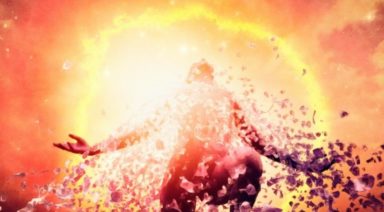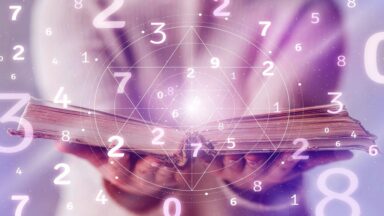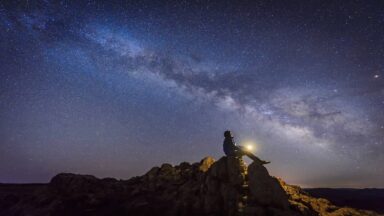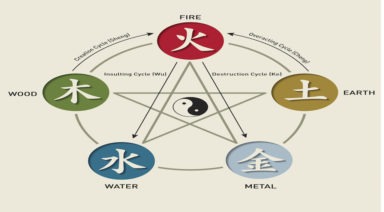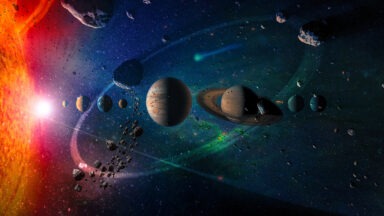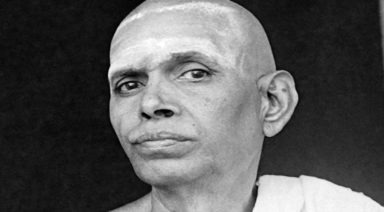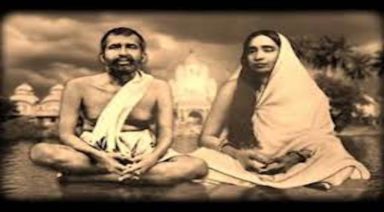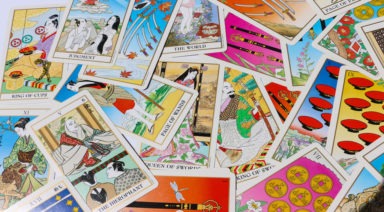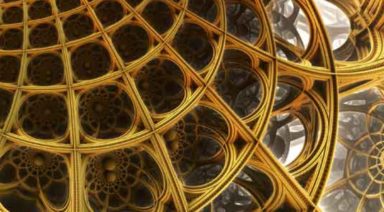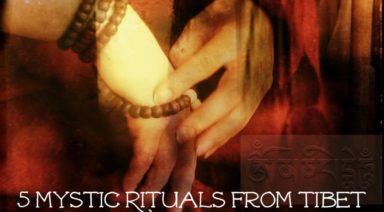Lunar Sadhana: Why Women Need to Align with the Moon

A disease can only take hold in a woman when her shakti is depleted and her rhythms are out of sync with mother moon.
Sri Swamini Mayatitananda
Look at the world around you and observe a multitude of rhythmic cycles. There is the 24-hour cycle of the sun as it revolves around the earth: as each day becomes night and then becomes day again. There is the rhythmic cycle of each season merging into the next: the winter snows melt, the seedlings sprout, the sun beats its rays on a warm sunny day, and the leaves begin to dry up and fall and float away. There is the rhythmic cycle of aging: the sweet and expansive nature of a baby, the ambitions of a teen and an adult, and the contemplative nature of our elders.
Ayurveda is the practice of observing nature’s rhythms and aligning ourselves with them. We honor the cycle of the sun by sleeping at an appropriate hour. We acknowledge the shifting seasons by favoring a seasonal diet. We honor the phases of our lives by being students as children, striving toward our ambitions as adults, and pursuing contemplative study as we age.
As women, we have additional senses of rhythm that connect us to the cycles of the moon. Each month, a woman’s body has the ability to cleanse and rejuvenate itself through her menses. It used to be in traditional cultures, that women would menstruate together during the dark night of the new moon. During this time they would gather to support one another in a journey of deep introspection.
During the night of the dark moon, when there is no moon in the sky, women are encouraged to look within and practice introspection. It is believed that her energy, in relationship to the moon, is at its lowest point. To safe guard her well-being, she is advised to spend time in quietude, rest, and inward reflection. When the moon is full, women are at their highest point energetically. She is encouraged to be more externally expansive, to get involved socially, and to finish long-term projects. Ayurveda teaches that this cyclical sway of energy exists inside each woman to cause her to wax and wane between experiences of self-inquiry and interactions with the external world.
In Ayurveda, the shakti prana of every woman exists in her womb. Her strength is found here and affects her on every level of her health. The cycles, the wax and wane, the natural emotional flow of the female is regarded as sacred. Ayurveda teaches that it is interwoven within a woman’s DNA to be an emotional being that fluctuates in emotional experience. This emotion is what makes her beautiful. It births her psychic nature, attunement with the cosmos, intuition and empathy.
During the new moon time, the natural period of menstruation, women are invited to take advantage of their sacred time of natural purification by going inward, extending meditation, refraining from intense activities, and allowing rest.
Modern times have demanded that many of us turn our backs on this beautiful process. It is interesting that the very thing that makes a woman sacred is culturally viewed as an inconvenience. This has made many young women ashamed, and even disgusted by her natural bodily processes. It has also left a wake of confusion regarding the emotional rhythm a woman experiences every month.
Every month, a woman has the natural ability to shed toxins, emotions, and physical blocks that no longer serve her. Her body cleanses and rejuvenates itself during her menses, during the period of the dark moon. When we do not take advantage of this time, we threaten the vital shakti prana that exists inside us. We disturb our energy levels and we step out of sync with the natural harmony that attempts to guide us.
The full moon also has its energetic advantages. It calls us forth to activity, ceremony, new projects, overcoming obstacles, and using external energy. By taking advantage of this natural fluctuation, by resting more during new moon and participating in externally motivated activities during the full moon, we heighten our shakti prana and enhance our inner harmony.
General Observations & Practices For the Moon Cycle
New Moon Time
Spend additional time in stillness and quietude. Rest, eat simple foods, and refrain from extensive cooking. Use a journal and practice self-inquiry. The new moon time is the most powerful time to set intentions for the rest of the month.
The Time Between the New Moon & Full Moon
The intentions, self-inquiries, and inner contemplations acknowledged during the new moon time begin to build in power. Every evening the waxing moon gains in size. Every accumulation represents a different aspect of the divine feminine that is within each woman. When the moon becomes full it is believed that it contains all the attributes of feminine power.
The time between the new moon and full moon also symbolizes the journey of maturation of the ovum. When engaged in these practices and moon observations, many women will find that their menstrual cycles shift to the moon cycle. In this way, women menstruate with the new moon, and ovulate with the full moon.
Full Moon Time
Full moon time is the culminated outward expression that builds from the seeds that were planted during new time. If there were negative impressions realized during new moon time, this is the optimal time to ritualistically release them. If there were intentions written down, this is the ideal time to do something loud to assert them. Ayurveda teaches that the full moon period is when a woman is at her strongest.
What Does Gaia Mean?

Although the name Gaia has various meanings and interpretations, it is most commonly associated with the Greek goddess who personified Earth in its primordial form. Quite simply, the definition of Gaia is life. She is all, the very personification of the earth. She is the mother goddess, inhabiting the planet, and offering life and nourishment to all her children. In ancient civilizations, she was revered as the mother, nurturer, and giver of life. She goes by many names, including Gaea, Ge, Mother Earth, Terra Mater to the Romans, Magna Mater, and more recently, Mother Nature. Each of these names is a testament to her enduring presence as the life-giver, the ultimate nurturer, and the architect of existence.
Gaia, often pronounced “GUY-uh,” holds the essence of existence within its syllables. This name, steeped in the rich tapestry of ancient Greek mythology, serves as a bridge to the Earth itself, embodying the very spirit of the planet. The etymology of Gaia, or Γαῖα in the original Greek, translates to ‘earth’ or ‘land,’ a fitting homage to her role as the primal Earth Mother. The term has since transcended its mythological roots, evolving into a symbol for the interconnectedness of all life on Earth, particularly within environmental and ecological contexts.
As we delve into the myriad ways she manifests across cultures and epochs, we embark on a journey to deepen our connection with the world around us, exploring the profound legacy of Gaia’s nurturing embrace.
Gaia: The Goddess of Ancient Greek Mythology
Within the pantheon of ancient deities, Gaia’s presence was unparalleled, embodying the very essence of primordial creation and maternal might. Her name, evoking the boundless strength and nurturing spirit of the Earth, was revered across the ancient world. To the Greeks, Gaia was the ultimate goddess of raw, maternal power. In the beginning, there was chaos, nebulous ethers waiting to take form. This primordial landscape awaited direction; it was then that the spirit of Gaia arrived to give structure to the formless and the Earth was conceived.
The Mother of Life and the Divine Heavens
In Greek mythology, Gaia stands as the quintessential embodiment of the Earth itself, revered as the primal Mother Earth goddess. From her fertile womb sprung the very fabric of the cosmos: she gave birth to Uranus, the sky, who would become both her husband and her equal; Pontus, the ancient, unfathomable sea; and the towering Titans, precursors to the Olympians. Among her offspring were the Titans – Cronus and Oceanus, the Cyclops with their single, piercing gaze, and the hundred-handed giants, each embodying forces of nature and the universe’s nascent power.
Her influence extended beyond mere creation. Gaia’s union with Uranus spawned the first pantheon of Greek deities, setting the stage for the saga of the gods and goddesses that would dominate Greek myth. Yet, it was through her guidance that Zeus, her grandson, ascended to become the chief among the Olympian gods. Her wisdom and might were echoed in the tales of her descendants, including Athena, the Greek goddess of wisdom, born of Zeus’s head, further cementing her legacy within the mythological hierarchy. Gaia’s story, interwoven with the elements of creation, celestial phenomena, and divine lineage, marks her as a central figure in the tapestry of Greek mythology and the subsequent origin of Olympus, embodying the Earth’s life-giving force and maternal strength.
The Paleolithic Venus: Rediscovering the Earth Mother
The Paleolithic Venus figurines, scattered across Europe, are emblematic of ancient societies’ reverence for the feminine Earth Mother—a veneration somewhat obscured by the passage of time. These figurines, often robust and gravid, symbolize fertility, motherhood, and the generative powers of nature itself. They serve as silent yet eloquent testimonials to a time when the worship of the Earth’s nurturing essence was widespread, deeply ingrained in the fabric of everyday life.
Modern excavations and scholarly endeavors have begun to peel back the layers of history, revealing a complex tapestry of belief systems that placed the Earth Mother at their core. Through the meticulous study of these artifacts, historians, archaeologists, and artists are gradually reconstructing the narratives of these ancient peoples. This resurgence of interest not only honors the goddess’s legacy but also rekindles a connection to our collective past, where the Earth was revered as the ultimate source of all life and sustenance.
A Return to Divine Feminine: Gaia’s Resurgence in Modern Consciousness
As the prevalence of gods and goddesses in the 19th and 20th centuries faded away, so did history books’ tales of female pharaohs, women scientists, and Amazon warriors. History is kept by the victors—and the victors are most often men. This left a void in the collective consciousness and Gaia was relegated to mythology alone. With the convergence of feminism in the 1970s, all that changed when a groundbreaking pro-female establishment was founded, providing a new understanding of how our planet operates.
In the wake of the 20th century, Gaia’s image was revitalized by the fusion of feminism and environmentalism. This revival spotlighted the divine feminine, with Gaia symbolizing strength, nurturing, and interconnectivity. Feminism’s quest to amplify silenced voices paralleled environmentalism’s rise, especially after “Silent Spring,” casting Gaia as an emblem of ecological awareness and unity. This modern embrace of Gaia has galvanized a collective push towards environmental respect and sustainability, intertwining spiritual reverence with activism for a balanced, thriving planet.
The Gaia Hypothesis: Earth as a Self-Regulating Living System
In 1970, chemist James Lovelock and his research partner, biologist Lynn Margulis introduced the Gaia Hypothesis, positing Earth as a self-regulating, living being capable of maintaining the conditions necessary for life. Initially met with skepticism, the hypothesis challenged the prevailing view of Earth as a passive backdrop to life, proposing instead that life actively participates in shaping the planet’s environment. This idea of Earth as a cohesive system, where biological processes interact with physical and chemical ones to maintain life-sustaining conditions, was revolutionary. The scientific community’s initial resistance stemmed from the hypothesis’s implication that Earth’s biosphere functions almost like a single organism, a concept that seemed to blur the lines between life and non-life.
Gaia Theory: Understanding Earth’s Intelligent Systems
Building on their hypothesis, Lovelock and Margulis’s work revealed how Earth’s myriad components—its atmosphere, biosphere, geology, and oceans—integrate to form a complex, self-regulating system. This system, guided by the interactions between living organisms and their environment, adjusts and responds to changes in a way that sustains life. For example, the regulation of Earth’s atmosphere by photosynthetic organisms, which convert carbon dioxide into oxygen, demonstrates this symbiotic relationship. Such mechanisms underscore the planet’s capacity for self-regulation and balance, evidencing a level of systemic intelligence previously underestimated.
Gaia theory has since evolved from a controversial hypothesis to a foundational concept in Earth system science, inspiring further research into how Earth’s life-supporting systems operate. It has underscored the importance of viewing the planet as an integrated whole, where each component plays a critical role in maintaining the conditions for life. This holistic perspective has significant implications for environmental conservation, highlighting the delicate interdependencies that sustain the Earth and the impact of human activities on its ability to regulate itself.
The Spiritual Meaning of Gaia in Practice
Far beyond the mythological Gaia, the name has come to represent an all-loving, nurturing, and intelligent cosmic force that oversees life on Earth. The revival of goddess traditions has been instrumental in reintroducing the ancient wisdom of the Great Mother, affirming her role as a beacon of love and sustenance. Yet, engaging with Gaia’s legacy demands more than occasional environmental activism or annual Earth Day observances. It calls for a daily commitment to living in harmony with our planet, treating each interaction as a sacred opportunity to honor and preserve the intricate web of life Gaia sustains.
To foster a truly connected relationship with Gaia means to actively participate in the stewardship of Earth, recognizing and respecting the bounty she provides. This involves making conscious choices that reflect our understanding of the interconnectedness of all life forms and the impact of our actions on the planet’s health. By adopting sustainable practices, advocating for environmental protection, and cultivating a sense of reverence for the natural world, we can contribute to a future where both humanity and the Earth flourish. In doing so, we not only pay homage to Gaia’s enduring spirit but also embrace our role as caretakers of the beautiful, dynamic planet she embodies.








